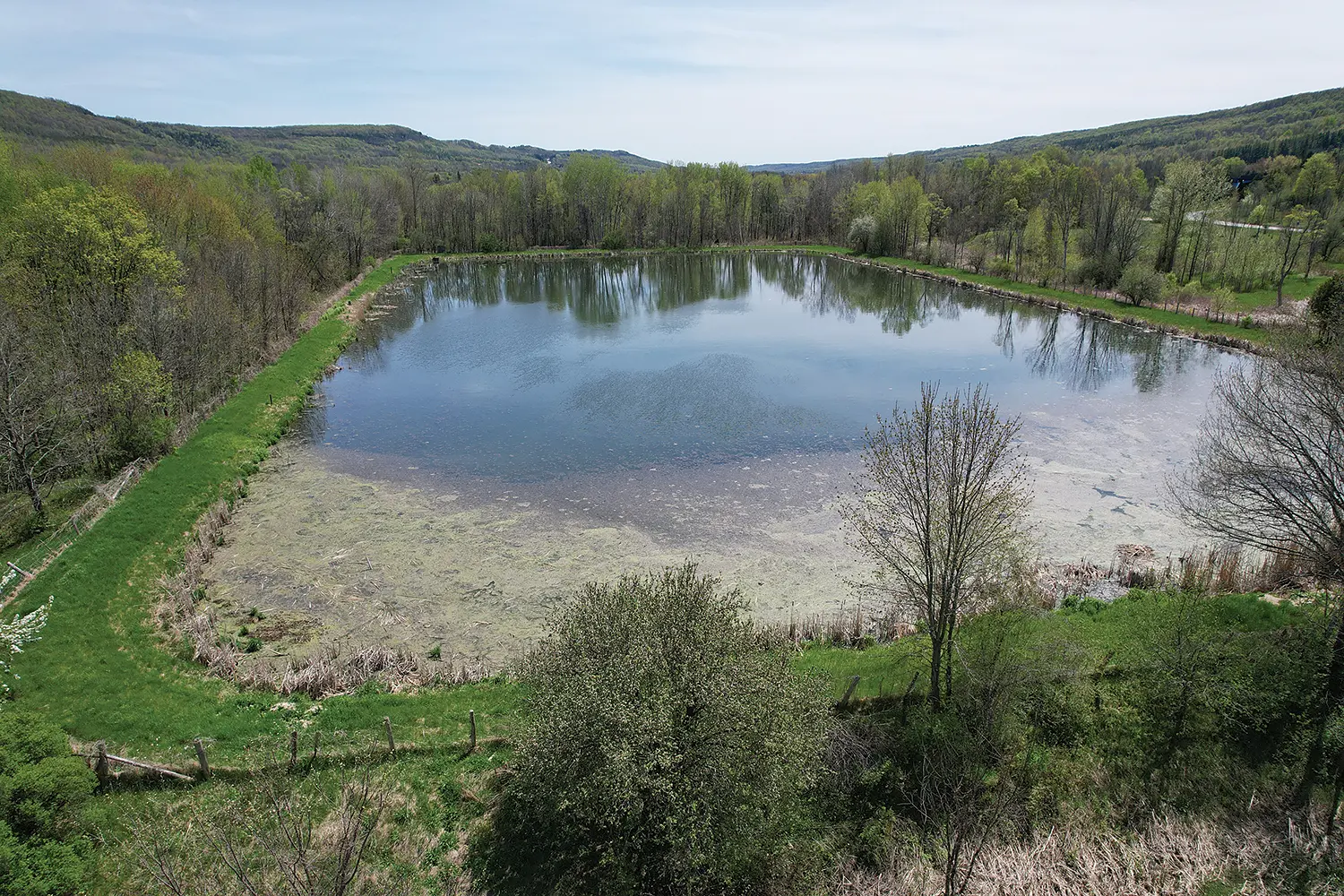Breach at aging Talisman wastewater plant highlights concerns about capacity for new development.
by Roger Klein // Photography by Roger Klein

The Ministry of the Environment, Conservation and Parks (MECP) has asked the municipality of Grey Highlands to review their operations at the Amik-Talisman wastewater treatment system, near Kimberley, after a leak in the primary sewage lagoon was discovered in May. It’s unclear how long the lagoon had been leaking or how much effluent escaped.
The lagoon, built in 1973, is part of the sewage treatment plant that serves the former Talisman Mountain Resort and the neighbouring Amik subdivision on the western slopes of the Beaver Valley. The aging infrastructure is under increased scrutiny from citizen groups because of the Beaver Valley Development Group’s proposal to build more than 300 homes on the lands.
“When we started looking at the details of their engineering reports it became quite clear that there were very serious issues about the capacity with the existing Amik-Talisman sewage system to be able to service any more homes, let alone 370 homes,” says Stephen Griggs, chair of the board for the Escarpment Corridor Alliance (ECA), a local environmental group dedicated to preserving the Escarpment.
Burrowing muskrats are getting the blame for perforating the earthen berm that separates 27,000 cubic metres of sewage from neighbouring wetlands and the Beaver River. Muskrats are well known for burrowing into pond embankments and dams to create nesting chambers. The burrows can cause considerable erosion and even potential dam failure.
According to the MECP, the municipality has committed to ongoing inspections of the berm’s integrity as well as monitoring downstream areas for any potential impacts. Ministry officials have also created a draft contingency plan for berm seepage to be reviewed by engineers. Engineering feedback has also been requested regarding the berm’s structural integrity and the impacts of surrounding vegetation to determine if further mitigation of the incident is needed.

While the ministry’s actions address the immediate environmental concerns that have come to light, the system’s capacity is still being questioned. Griggs points out that the wastewater plant is operating under a patchwork of regulatory approvals that date back to the late 1960s and an environmental assessment would be needed to bring it up to modern standards before development plans move forward.
“An environmental assessment needs to be done. The highest level of environmental assessment is required, particularly because the system is adjacent to the Beaver River and the Beaver River wetlands which are very important provincially,” says Griggs.













